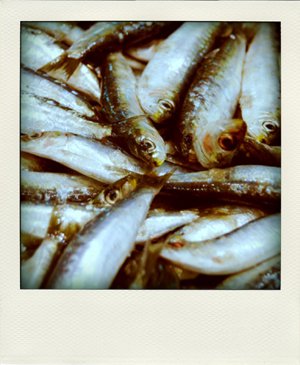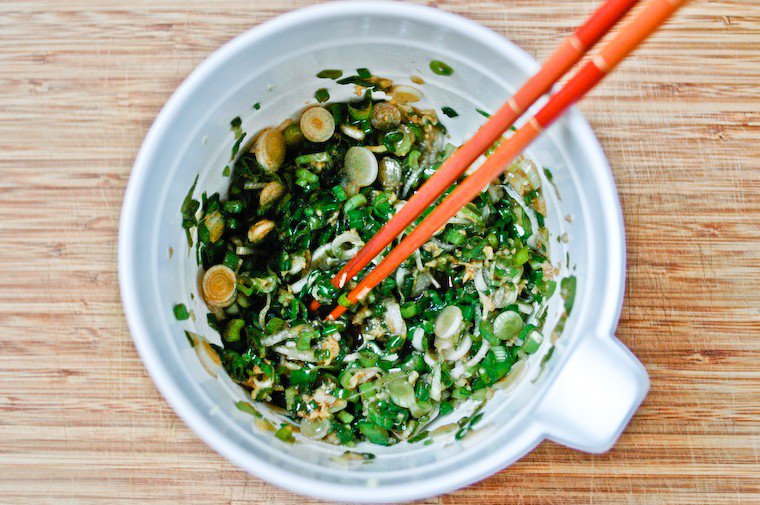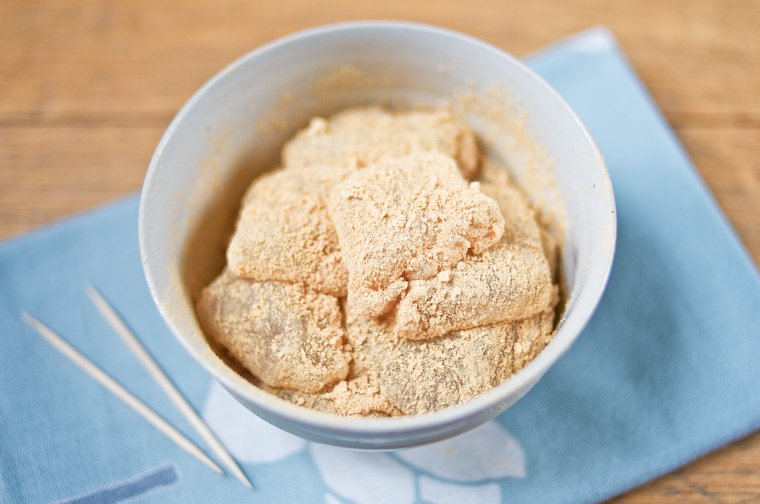I am rhubarb’s most adoring fan.
Throughout the season, in the spring and then in late summer, my weekly market run includes a big bunch of blushing stalks that I’ll cook promptly, once home, into a compote* I’ll eat for breakfast (with a gurgle of homemade kefir) throughout the week.
While compote is my standard use for rhubarb, I love it in a tart, too, and that’s what I decided to serve for dessert last week, when we had friends over for dinner.
My mother makes a fine one on the crisp pâte sablée I’ve shared in my book, with a thin layer of custard filling that is refered to as migaine, goumeau, or not at all, depending on the region. I walked in her footsteps for the most part, straying here and there to try a couple of new things.
In addition to the rhubarb stalks, I had a fresh bunch of lemon verbena that was looking at me with an expression like, “Um, hello?”
First of all, I recently received a copy of Catherine Kluger‘s little book on tarts, and I felt inspired to try her recipe for pâte sucrée (sweet tart dough).
The dough came together easily, and baked into quite the delicate crust, not too rich, not too sweet, and lightly crumbly in texture. I had major difficulties in rolling it out, but the recipe had nothing to do with it: it just happened to be a very warm day — we were going through a mini heatwave that would end in a thunderstorm later that night — and this is a notoriously bad state of affairs if your mission is to roll out pastry.**
Second, I wanted to add a flavoring of some sort to compliment the rhubarb: rhubarb + ginger is the pairing I had in mind originally (in the form of fresh and/or candied ginger, I hadn’t yet decided). But I also had a fresh bunch of lemon verbena on hand that was looking at me with an expression like, “Um, hello?” I didn’t approve of the attitude, but I had to agree their singing voices would harmonize perfectly.
I also applied two tricks I’d picked up while sifting through the comments below this post: 1- I macerated the rhubarb in sugar for a couple of hours so it would release some of its juices. These I reduced into a syrup and then infused with the lemon verbena.
And 2- I sprinkled the bottom of the par-baked crust with a little tapioca, to contain any excess juice from the rhubarb. Unless you’re looking really closely you can’t make them out in the finished product, but it contributes to the silkiness of the filling, and helps the crust retain its crispness. This trick can be applied to any tart in which the fruit might release too much juice during the baking (peaches, for instance) and it’s one I call upon for my savory vegetable tarts as well, though I’ll use orzo pasta (pâtes langue d’oiseau) or bulgur then.
The tart format really is a lovely foil for rhubarb; the best one, I would argue. It’s a humble, comforting dessert — there’s nothing intimidating about the rhubarb tart — that celebrates the complex tang of the fruit***, and in this version, the lemon verbena flavoring subtly accents its floral notes.
~~~
* I enjoy the tartness of rhubarb, so I sweeten my compote very lightly, adding about 10% of the net weight of rhubarb in unrefined cane sugar. I combine the rhubarb chunks with the sugar in my cast-iron cocotte and cook over medium heat for about 15 minutes, stirring once or twice during that time. Then I remove the pot from the heat and let it sit covered for a while to finish softening while we eat lunch.
** When I mentioned this painful situation, Rachel shared the following tip: place an ice-filled tray on your work surface for ten minutes beforehand. It will lower the temperature of the surface (provided it’s not wood) and help keep the dough cool enough to work with.
*** From a botanical perspective, rhubarb is actually a vegetable. Maybe it could switch seats with the fruit-as-a-vegetable eggplant or cucumber or avocado, and then the world would be a less confusing place?








